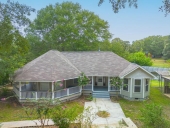


Rocket Mass Heater Plans: Annex 6" L-shaped Bench by Ernie and Erica
will be released to subscribers in:
soon!



 1
1




 1
1




Invasive plants are Earth's way of insisting we notice her medicines. Stephen Herrod Buhner
Everyone learns what works by learning what doesn't work. Stephen Herrod Buhner
 1
1




 1
1




 1
1




 2
2




 1
1




 4
4




Please give me your thoughts on my Affordable, double-paned earthbag window concept

















 1
1




 2
2




John Daley Bendigo, Australia The Enemy of progress is the hope of a perfect plan
Benefits of rainfall collection https://permies.com/t/88043/benefits-rainfall-collection
GOOD DEBT/ BAD DEBT https://permies.com/t/179218/mortgages-good-debt-bad-debt
 2
2




SKIP books, get 'em while they're hot!!! Skills to Inherit Property
See me in a movie building a massive wood staircase:Low Tech Lab Movie
 2
2




 1
1




To be is to do …Kant
To do is to be ..Nietzsche
Do be do be do…Sinatra
 2
2




Please give me your thoughts on my Affordable, double-paned earthbag window concept

















 2
2




 1
1




John Daley Bendigo, Australia The Enemy of progress is the hope of a perfect plan
Benefits of rainfall collection https://permies.com/t/88043/benefits-rainfall-collection
GOOD DEBT/ BAD DEBT https://permies.com/t/179218/mortgages-good-debt-bad-debt
 1
1




 1
1




hire out HVAC though
The four most common causes of exposed fasteners backing out are:
- Incorrect initial installation. Overdriven screws damage the fibres in either the wood or sheet substrate reducing holding power.
- Ice dams can, as you say, put pressure on the heads.
- Too few fasteners combined with light gauge roofing can allow wind to create repeated movement in the panels slowly working them loose.
- Moisture in the furring or plywood reduces its holding capacity.
The best solution, but for a variety of reasons not the most palatable, is to replace the roof with a concealed fastener snap-lock roof.
Barring that, and given that the substrate is in good shape, I'd replace all the gasketed fasteners with ones of a much larger diameter.
I've also heard that the expansion and contraction of through fastened steel due to temperature changes can work the screws loose. This is exacerbated when the substrate is thin plywood or osb. Solid wood strapping or purlins are the preferred substrate.
John Daley Bendigo, Australia The Enemy of progress is the hope of a perfect plan
Benefits of rainfall collection https://permies.com/t/88043/benefits-rainfall-collection
GOOD DEBT/ BAD DEBT https://permies.com/t/179218/mortgages-good-debt-bad-debt
 1
1




SKIP books, get 'em while they're hot!!! Skills to Inherit Property
See me in a movie building a massive wood staircase:Low Tech Lab Movie
 1
1




AnnaLea Kodiak wrote:
I may be misinformed about earthbags, I know they operate on the property of thermal mass as opposed to insulation, but I figured we wouldn't need insulation if the thermal was thick enough. I thought that if we were heating or cooling internally, the earthbags would retain that temperature and then radiate the heat or cool, reducing costs. Is this not true? Would it just go straight through and be lost to the outdoors? I may be misunderstanding how thermal mass works.
Please give me your thoughts on my Affordable, double-paned earthbag window concept

















 1
1




John Daley Bendigo, Australia The Enemy of progress is the hope of a perfect plan
Benefits of rainfall collection https://permies.com/t/88043/benefits-rainfall-collection
GOOD DEBT/ BAD DEBT https://permies.com/t/179218/mortgages-good-debt-bad-debt
 1
1




And in winter, you can close the bottom vents and run a fan down a duct from the top to the bottom,
 1
1





 1
1





 1
1




 1
1




John Daley Bendigo, Australia The Enemy of progress is the hope of a perfect plan
Benefits of rainfall collection https://permies.com/t/88043/benefits-rainfall-collection
GOOD DEBT/ BAD DEBT https://permies.com/t/179218/mortgages-good-debt-bad-debt

|
I've been selected to go to the moon! All thanks to this tiny ad:
2024 Permaculture Adventure Bundle (now a special for october 2025)
https://permies.com/w/bundle
|




